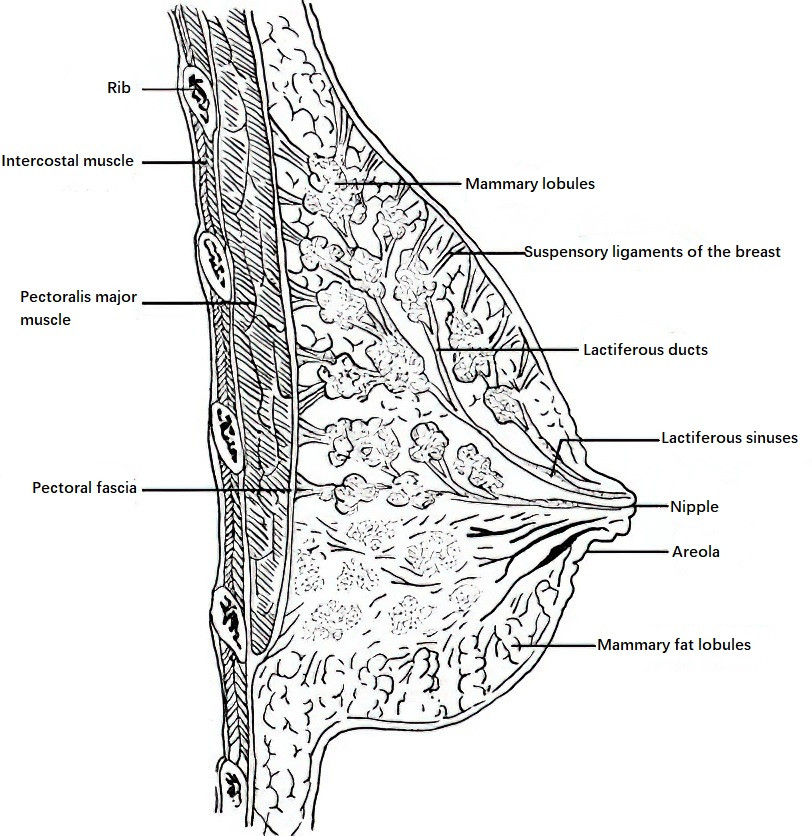The breast is a unique structure found in humans and other mammals and is a component of the reproductive system. The mammary gland serves as a target organ for various endocrine glands and is influenced by hormones secreted by the anterior pituitary, adrenal cortex, and ovaries, among others. At different stages of life, the physiological condition of the mammary gland varies under the influence of these hormones. Female breasts begin to grow and develop during puberty, become active in secretion during pregnancy and lactation, and start producing small amounts of milk at the end of pregnancy. After childbirth, milk production increases as the infant grows. The glandular tissue of the breast atrophies and diminishes in size following the cessation of breastfeeding.
Shape and Location
The adult female breast is a hemispherical or pendulous secondary sexual organ located on the surface of the pectoralis major muscle and the pectoral fascia, approximately at the level of the 2nd to 6th ribs. The nipple is located at the center of the breast and is typically positioned at the 4th intercostal space or at the intersection of the 5th rib and the midclavicular line. The nipple's surface contains numerous small pits, which house the lactiferous ducts. The pigmented region surrounding the nipple is called the areola of the breast. The areola's surface features small elevations, beneath which are areolar glands. These glands secrete lipid-like substances to lubricate the nipple. During pregnancy and lactation, the nipple and areola darken due to increased pigmentation.

Figure 1 Sagittal section of the female breast
Structure
The breast consists of skin, fatty tissue, fibrous tissue, and the mammary gland. The mammary gland is made up of 15–20 lobes, each of which is further divided into multiple lobules. Each lobule is composed of small ducts and alveoli. Each mammary lobe has its own duct, referred to as a lactiferous duct, which opens at the nipple. Near the nipple, the lactiferous ducts expand to form lactiferous sinuses. Damage or cracking of the nipple can allow bacteria to invade the lactiferous ducts and ascend to the lobules, causing infective acute mastitis, which is most common in breastfeeding women during the 3rd to 4th week postpartum or during weaning. Mammary lobes and lactiferous ducts are arranged radially around the nipple, which is why radial incisions are preferred for the drainage of breast abscesses to avoid damaging lactiferous ducts.